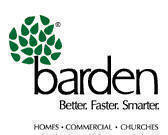|

| |
Another effective shopping technique is to compare identical loans with
different up-front points and fees. For example, if you are offered two 30-year
fixed rate loans for $100,000 and at 8%, the monthly payments are the same, but
the up-front costs are different:
Loan A-2 points ($2,000) and lender required costs of $1800 = $3800 in costs
Loan B-2 1/4 pints ($2250) and lender required costs of $1200 - $3450 in costs.
A comparison of the up-front costs shows Loan B requires $350 less in up-front
cash than Loan A. However, your individual situation (how long you plan to stay
in your house) and your tax situation (points can usually be deducted for the
tax year that you purchase a house) may affect your choice of loans.
Locking in your rate or points at the time of applications or during the
processing of your loan will keep the rate and/or points from changing until
settlement or closing of the escrow process. Ask your lender if there is a fee
to lock-in the rate and whether the fee reduces the amount you have to pay for
points. Find out how long the lock-in is good, what happens if it expires, and
whether the lock-in fee is refundable if your application is rejected.
Your monthly mortgage payment will be used to repay the money you borrowed plus
interest. Part of your monthly payment may be deposited into an escrow account
(also known as a reserve or impound account). Ask your lender or mortgage broker
if you will be required to set up an escrow or impound account for taxes and
insurance payments.
While you may start the loan process with a lender or mortgage broker, you could
find that after settlement another company may be collecting the payments on
your loan. Collecting loan payments is often known as servicing the loan. Your
lender or broker will disclose whether it expects to service your loan or to
transfer the servicing to someone else.
Private mortgage insurance and government mortgage insurance protect the lender
against default and enable the lender to make a loan which the lender considers
a higher risk. Lenders often require mortgage insurance for loans where the down
payment is less than 20% of the sales price. You will be billed monthly,
annually, by an initial lump sum, or some combination of these practices for
your mortgage insurance premium. Ask your lender if mortgage insurance is
required and how much it will cost. Mortgage insurance should not be confused
with mortgage life, credit life or disability insurance, which are designed to
pay off a mortgage in the event of the borrower's death or disability.
You may also be offered "lender paid" mortgage insurance (LPMI). Under LPMI
plans, the lender purchases the mortgage insurance and pays the premiums to the
insurer. The lender will increase your interest rate to pay for the
premiums--but LPMI may reduce your settlement costs. You cannot cancel LPMI or
government mortgage insurance during the life of your loan. However, it may be
possible to cancel private mortgage insurance at some point, such as when your
loan balance is reduced to a certain amount. Before you commit to paying for
mortgage insurance, find out the specific requirements for cancellation.
Most lenders will not lend you money to buy a home in a flood hazard area unless
you pay for flood insurance. Some government loan programs will not allow you to
purchase a home that is located in a flood hazard area. Your lender may charge
you a fee to check for flood hazards. You should be notified if flood insurance
is required. If a change in flood insurance maps brings your home within a flood
hazard area after your loan is made, your lender or servicer may require you to
buy flood insurance at that time.

|
 Real Estate Services Today, Inc.
Real Estate Services Today, Inc.
![]()